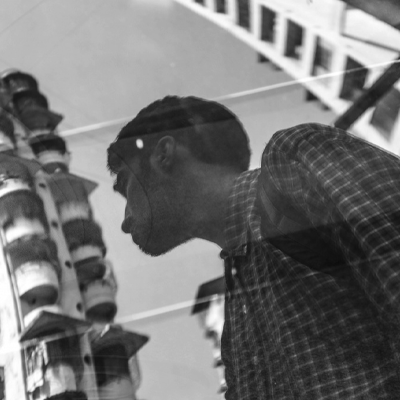Do you recognise this image? If so, when and where have you seen it?
Did you see it in your dreams? Did you see it on television? Was it in the cinema, in the middle of a science fiction movie? Was it on your computer, on a now-obsolete operating system?
This image, often referred to as a starfield simulation or streaming stars, gives us the impression we are floating or traveling through space. The starfield simulation combines our sense of depth perception with our imagination of moving through space. After encountering iteration upon iteration, from rapidly advancing towards the moon in Georges Méliès’ A Trip to the Moon (1902), the introduction of Star Trek: The Original Series (1966-1969), the Atari game Star Raiders (1979) to a screensaver that came with the Windows 3.1 operating system (1992), we may begin to believe the impression until it achieves a sense of reality.
Despite this sense of reality, the starfield simulation is a simulation. These are not stars and this is not space. It is light and darkness, or pixels- black and white. This is only an image. We are familiar with this image only via its constructions.
No being has ever seen this with their own eyes, and perhaps no one ever will. Even if one were floating through space, the stars would not pass us in such a way unless, perhaps, as envisioned in Charles and Ray Eame’s Powers of Ten (1977), we were over 10 light-years away from the earth’s surface and traveling at speeds currently outside the realm of our abilities.
Over time, the starfield simulation has remained relevant. Image makers have translated the image over changes in technology and medium to fulfill our desire to feel we are drifting through the stars.
Despite the starfield simulation’s genealogy, at one level where this image comes from doesn’t really matter. It is, after all, partaking in our desire away from the world around us, towards, in the words of Star Trek, “where no one has gone before” (a saying with its own rich and complicated history).
In today’s landscape, this desire can be exercised in a number of ways, ranging from Google Sky to zooming to the moon, even the promise of adventure and escape pervading the travel and tourism industries within our own atmosphere.
Given the well-worn path this image has trod, has it defeated its own purpose of taking us towards the unknown? Is its use ecologically-conscious recycling or perpetuation of space-junk?
If we have various points that the image has traversed before, do those points extend to a determinable destination? Is the image destined to travel this path, or is there a possibility for it to go elsewhere?
Share this:
- Click to share on Facebook (Opens in new window) Facebook
- Click to email a link to a friend (Opens in new window) Email
- Click to share on X (Opens in new window) X
- Click to share on LinkedIn (Opens in new window) LinkedIn
- Click to share on WhatsApp (Opens in new window) WhatsApp
- Click to share on Telegram (Opens in new window) Telegram


